Social Sustainability Assessment of Canadian Egg Production Facilities: Methods, Analysis, and Recommendations
Abstract
1. Introduction
2. Materials and Methods
2.1. Goal and Scope of the Study
2.1.1. Life Cycle Inventory Analysis
2.1.2. Life Cycle Impact Assessment Methods
- (a)
- aggregating some inventory data within subcategories and categories; and
- (b)
- making use of additional information, such as internationally accepted levels of minimum performance, to help understand the magnitude and the significance of the data collected in the Inventory phase.
Establishing Performance Reference Points
2.1.3. Interpretation and Recommendations
- elucidating the key social risks and benefits for stakeholders that are specifically associated with activities that occur at Canadian egg production facilities.
- identifying priority areas for interventions to improve the social license of Canadian egg producers, either via communications regarding the social benefits associated with the egg industry, or commitments to monitor and seek to improve the social sustainability profile of Canadian egg production with respect to specific social risk areas.
- identifying priority areas for further data collection and research.
- highlighting weaknesses of the current study and recommending areas for further research and methods development.
3. Results
3.1. Life Cycle Inventory Results
3.2. Life Cycle Impact Assessment Results
STAKEHOLDER: WORKERS
Freedom of Association and Collective Bargaining Rights
Fair Salary
Working Hours
Equal Opportunities
Health and Safety
Social Benefits, Social Security, and Job Security
STAKEHOLDER: LOCAL COMMUNITY
Access to Resources
Safe and Healthy Living Conditions
Respect for Indigenous Rights
Community Engagement
Local Employment
STAKEHOLDER: VALUE CHAIN PARTNERS
Fair Competition
Promoting Social Responsibility
Supplier Relationships
STAKEHOLDER: SOCIETY
Public Commitment to Sustainability
Contribution to Economic Development
Employee Training
Corruption
4. Discussion
Supplementary Materials
Funding
Conflicts of Interest
References
- Pelletier, N.; Sala, S.; Ostaglu, E.; Rosenbaum, E.; Vasta, A.; Benoit-Norris, C.; Norris, G. Social sustainability in trade and development policy. Int. J. Life Cycle Assess. 2018, 23, 629–639. [Google Scholar] [CrossRef]
- Jorgensen, A.; Le Bocq, A.; Nazarkina, L.; Hauschild, M. Methodologies for social life cycle assessment. Int. J. Life Cycle Assess. 2008, 13, 96–103. [Google Scholar] [CrossRef]
- Jorgensen, A.; Lai, L.; Hauschild, M. Assessing the validity of impact pathways for child labour and wellbeing in social life cycle assessment. Int. J. Life Cycle Assess. 2010, 15, 5–16. [Google Scholar] [CrossRef]
- Jorgensen, A. Social LCA—A way ahead? Int. J. Life Cycle Assess. 2013, 18, 296–299. [Google Scholar] [CrossRef]
- Zamagni, A.; Feschet, P.; De Luca, A.; Iofrida, N.; Buttol, P. Social Life Cycle Assessment: Methodologies and Practice. In Sustainability Assessment of Renewables-Based Products: Methods and Case Studies; Dewulf, J., De Meester, S., Rodrigo, A., Eds.; Wiley: New York, NY, USA, 2015; Available online: http://ca.wiley.com/WileyCDA/WileyTitle/productCd-111893394X.html# (accessed on 5 January 2017).
- UNEP/SETAC. Guidelines for Social Life Cycle Assessment of Products. In The UNEP/SETAC Life Cycle Initiative; UNEP/SETAC: Paris, France, 2009. [Google Scholar]
- Benoit-Norris, C.; Norris, G.; Valdivia, S.; Ciroth, A.; Moberg, A.; Bos, U.; Prakash, S.; Ugaya, C.; Beck, T. The guidelines for social life cycle assessment of products: Just in time! Int. J. Life Cycle Assess. 2010, 15, 156–163. [Google Scholar] [CrossRef]
- Do Carmo, B.; Margni, M.; Baptiste, P. Addressing uncertain scoring and weighting factors in social life cycle assessment. Int. J. Life Cycle Assess. 2017, 22, 1609–1617. [Google Scholar] [CrossRef]
- Wu, R.; Yang, D.; Chen, J. Social life cycle assessment revisited. Sustainability 2014, 6, 4200–4226. [Google Scholar] [CrossRef]
- Iofrida, N.; De Luca, A.; Strano, A.; Gulisano, G. Can social research paradigms justify the diversity of approaches to social life cycle assessment? Int. J. Life Cycle Assess. 2018, 23, 464–480. [Google Scholar] [CrossRef]
- Paragahawewa, U.; Blackett, P.; Small, B. Social Life Cycle Analysis (S-LCA): Some Methodological Issues and Potential Application to Cheese Production in New Zealand; AgResearch Ltd.: Palmerston North, New Zealand, 2009. [Google Scholar]
- Smith, J.; Barling, D. Social impact and life cycle assessment: Proposals for methodological development for SMEs in the European food and drink sector. Int. J. Life Cycle Assess. 2014, 19, 944–949. [Google Scholar] [CrossRef]
- De Luca, A.; Iofrida, N.; Strano, A.; Falcone, G. Social life cycle assessment and participatory approaches: A methodological proposal applied to citrus farming in Southern Italy. Integr. Environ. Assess. 2015, 11, 383–396. [Google Scholar] [CrossRef] [PubMed]
- Chen, W.; Holden, N. Social life cycle assessment of average Irish dairy farm. Int. J. Life Cycle Assess. 2017, 22, 1459–1472. [Google Scholar] [CrossRef]
- Petti, L.; Ramirex, P.; Traverso, M.; Ugaya, C. An Italian tomato “Cuore di Bue” case study: Challenges and benefits of using subcategory assessment method for social life cycle assessment. Int. J. Life Cycle Assess. 2018, 23, 569–580. [Google Scholar] [CrossRef]
- Benoît-Norris, C.; Vickery-Niederman, G.; Valdivia, S.; Franze, J.; Traverso, M.; Ciroth, A.; Mazijn, B. Introducing the UNEP/SETAC methodological sheets for subcategories of social LCA. Int. J. Life Cycle Assess. 2011, 16, 682–690. [Google Scholar] [CrossRef]
- Spillemaecker, S.; Vanhoutte, G.; Traverniers, L.; Lavrysen, L.; van Braeckel, D.; Mazijin, B.; Rivera, J. Integrated Product Assessment: The Development of the Label ‘Sustainable Development’ For Products, Ecological, Social, and Economical Aspects of Integrated Product Policy; Belgian Science Policy: Brussels, Belgium, 2004. [Google Scholar]
- Dreyer, L.; Hauschild, M.; Schierbeck, J. Characterisation of social impacts in LCA. Int. J. Life Cycle Assess. 2010, 15, 247–259. [Google Scholar] [CrossRef]
- Reveret, J.P.; Couture, J.M.; Parent, P. Socio-economic LCA of milk production in Canada. In Social Life Cycle Assessment; Muthu, S., Ed.; Springer Science + Business Media: Singapore, 2015. [Google Scholar] [CrossRef]
- AAFC. Canada’s Poultry and Egg Industry Profile at a Glance; Agriculture and Agri-Food Canada: Ottawa, ON, Canada, 2013.
- ESDC. Work—Work-Related Injuries. Indicators of Well-Being in Canada; Employment and Social Development Canada: Toronto, Canada, 2015. Available online: http://www4.hrsdc.gc.ca/.3ndic.1t.4r@-eng.jsp?iid=20 (accessed on 10 June 2016).
- CBC. What Are the Overall Voluntary and Involuntary Turnover Rates for Canadian Organizations? HR Questions and Answers; Conference Board of Canada: Ottawa, ON, Canada, 2015; Available online: http://www.conferenceboard.ca/topics/humanresource/questions.aspx#Q1 (accessed on 10 June 2016).
- Kruse, S.; Flysjo, A.; Kasperczyk, N.; Scholz, A. Socioeconomic indicators as a complement to life cycle assessment—An application to salmon production systems. Int. J. Life Cycle Assess. 2009, 14, 8–18. [Google Scholar] [CrossRef]
- Manik, Y.; Leahy, J.; Halog, A. Social life cycle assessment of palm oil biodiesel: A case study in Jambi Province of Indonesia. Int. J. Life Cycle Assess. 2013, 18, 1386–1392. [Google Scholar] [CrossRef]


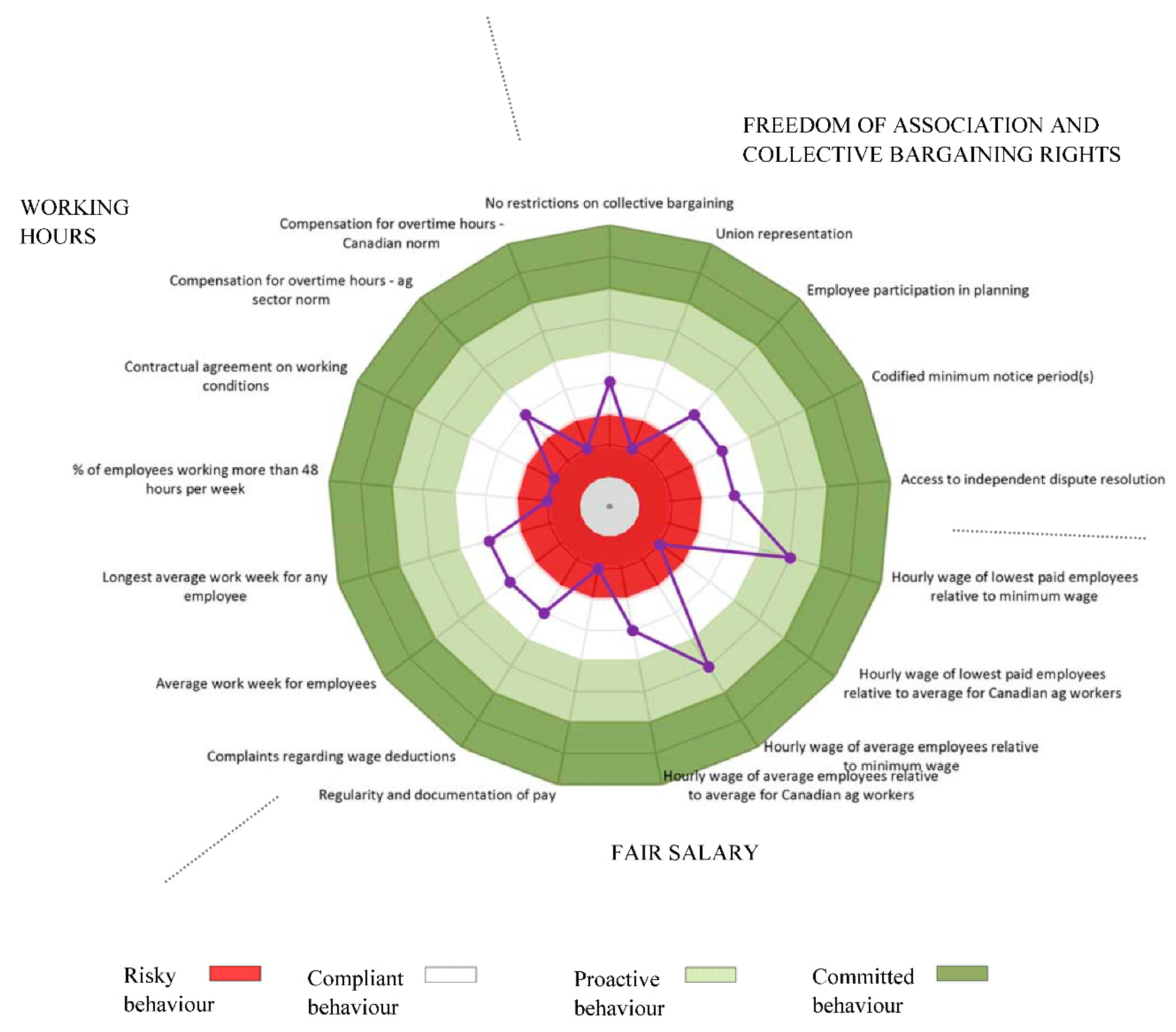
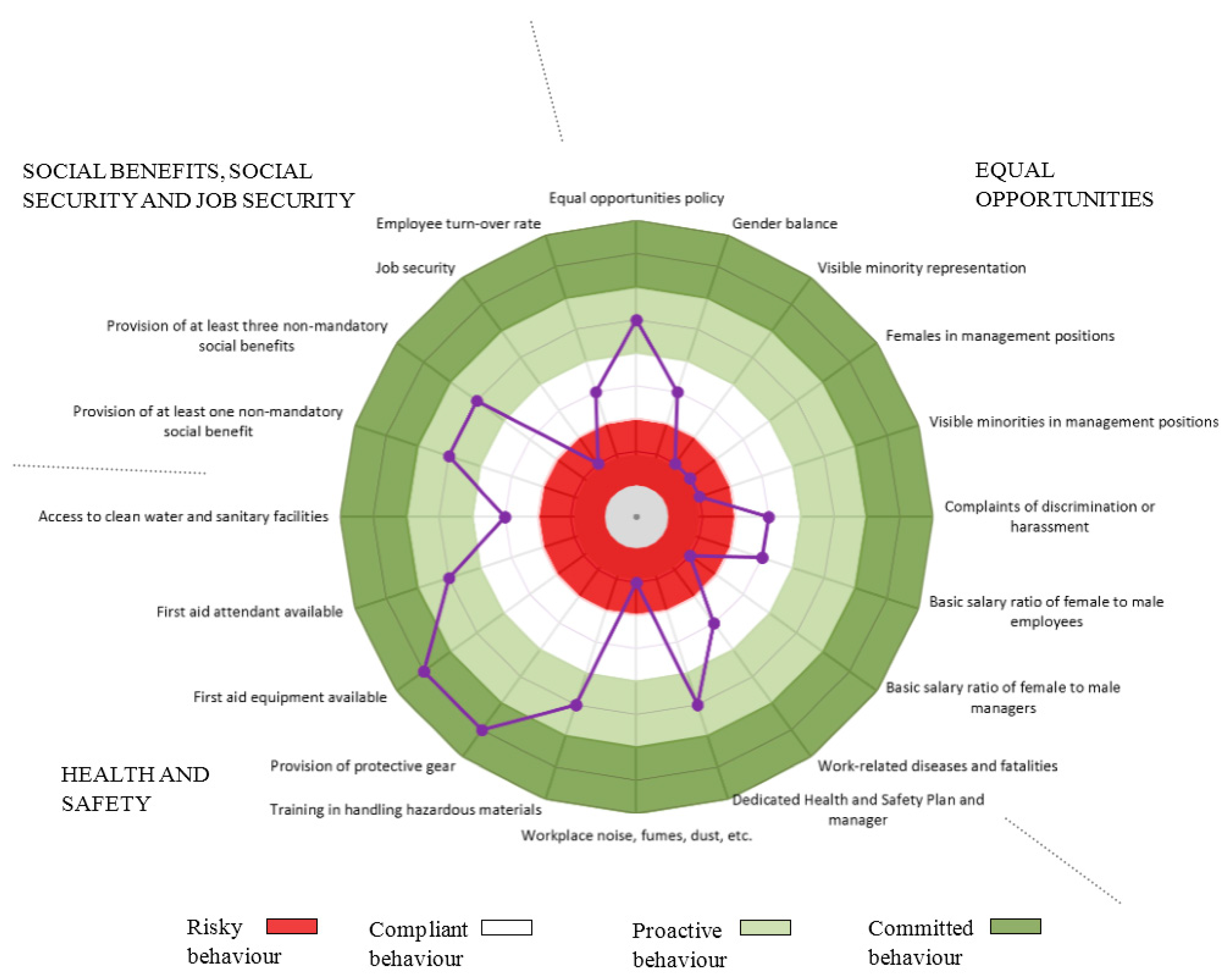
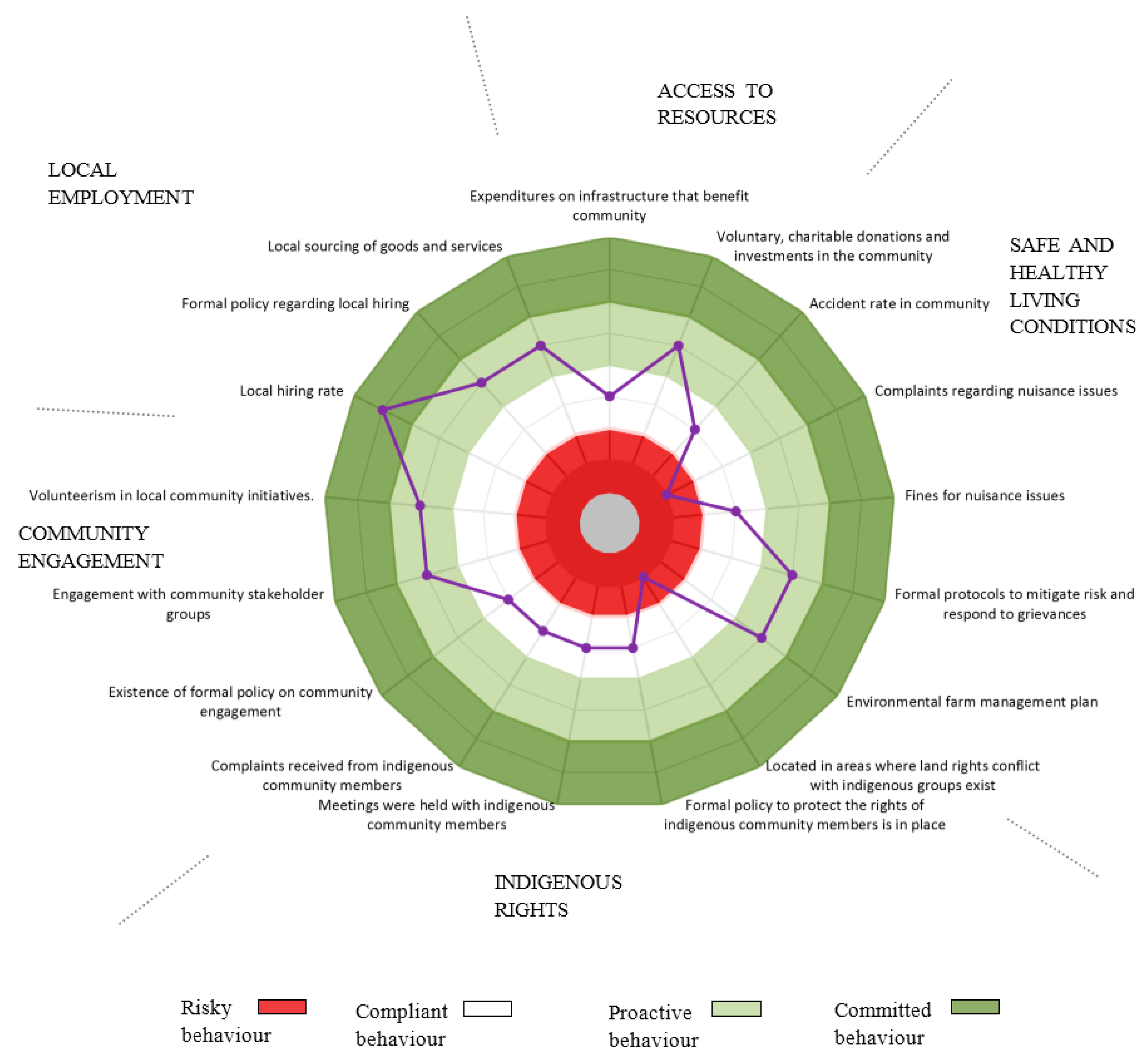
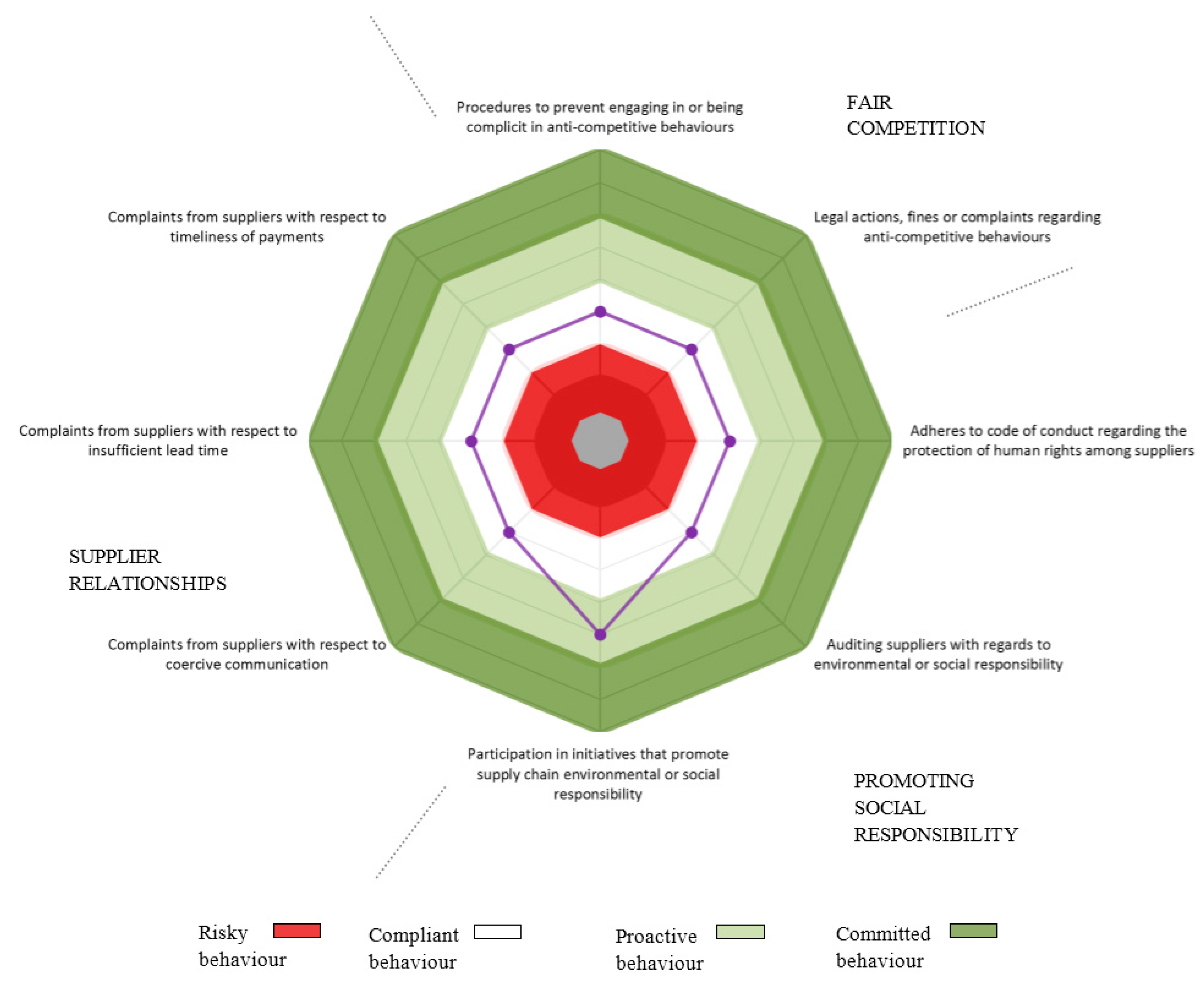
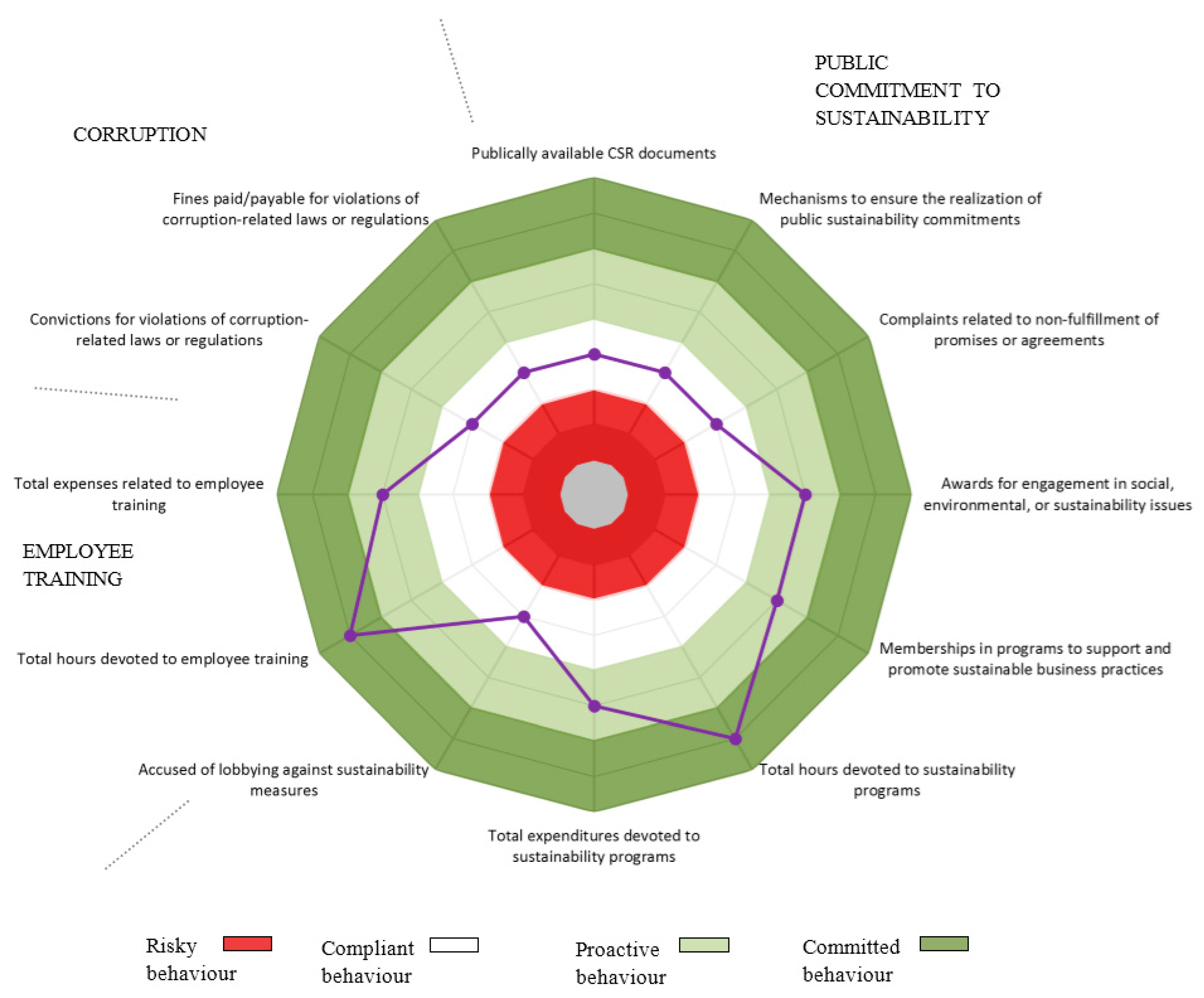
| STAKEHOLDER: WORKERS |
|---|
| Freedom of association and collective bargaining rights |
| Fair salary |
| Working hours |
| Equal opportunities |
| Health and safety |
| Social benefits, social security, and job security |
| STAKEHOLDER: LOCAL COMMUNITY |
| Access to resources |
| Safe and healthy living conditions |
| Respect for indigenous rights |
| Community engagement |
| Local employment |
| STAKEHOLDER: SOCIETY |
| Public commitment to sustainability issues |
| Contribution to economic development |
| Employee training |
| Corruption |
| STAKEHOLDER: VALUE CHAIN PARTNERS |
| Fair competition |
| Promoting social responsibility |
| Supplier relationships |
© 2018 by the author. Licensee MDPI, Basel, Switzerland. This article is an open access article distributed under the terms and conditions of the Creative Commons Attribution (CC BY) license (http://creativecommons.org/licenses/by/4.0/).
Share and Cite
Pelletier, N. Social Sustainability Assessment of Canadian Egg Production Facilities: Methods, Analysis, and Recommendations. Sustainability 2018, 10, 1601. https://doi.org/10.3390/su10051601
Pelletier N. Social Sustainability Assessment of Canadian Egg Production Facilities: Methods, Analysis, and Recommendations. Sustainability. 2018; 10(5):1601. https://doi.org/10.3390/su10051601
Chicago/Turabian StylePelletier, Nathan. 2018. "Social Sustainability Assessment of Canadian Egg Production Facilities: Methods, Analysis, and Recommendations" Sustainability 10, no. 5: 1601. https://doi.org/10.3390/su10051601
APA StylePelletier, N. (2018). Social Sustainability Assessment of Canadian Egg Production Facilities: Methods, Analysis, and Recommendations. Sustainability, 10(5), 1601. https://doi.org/10.3390/su10051601





